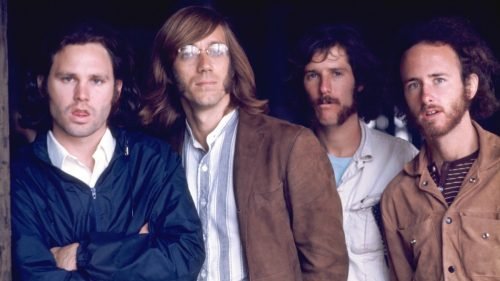“LA Woman,” released in April 1971, stands as a monumental achievement in The Doors’ discography, encapsulating the raw essence of the band’s innovative spirit and the enigmatic charisma of their lead singer, Jim Morrison. As their sixth studio album, “LA Woman” marked a departure from the more polished, produced sound of their earlier works, instead embracing a gritty, blues-infused rock that resonated deeply with fans and critics alike. This album not only showcased The Doors’ musical evolution but also highlighted their ability to adapt and innovate amidst changing times.
Jim Morrison’s role in “LA Woman” was nothing short of pivotal. Known for his poetic lyrics and magnetic stage presence, Morrison’s influence permeated the album, both in its thematic depth and vocal intensity. At this juncture, Morrison was grappling with personal and legal challenges, including a highly publicized trial for indecent exposure. Despite these tumultuous circumstances, he delivered one of his most powerful and introspective performances, infusing the album with a sense of urgency and authenticity.
“LA Woman” is especially significant as it represents Morrison’s final contribution to The Doors before his untimely death in July 1971. His departure to Paris shortly after the album’s completion and his subsequent passing marked the end of an era for the band and for rock music. The album thus serves as a poignant farewell, immortalizing Morrison’s legacy and capturing a moment of profound transformation for The Doors.
Background
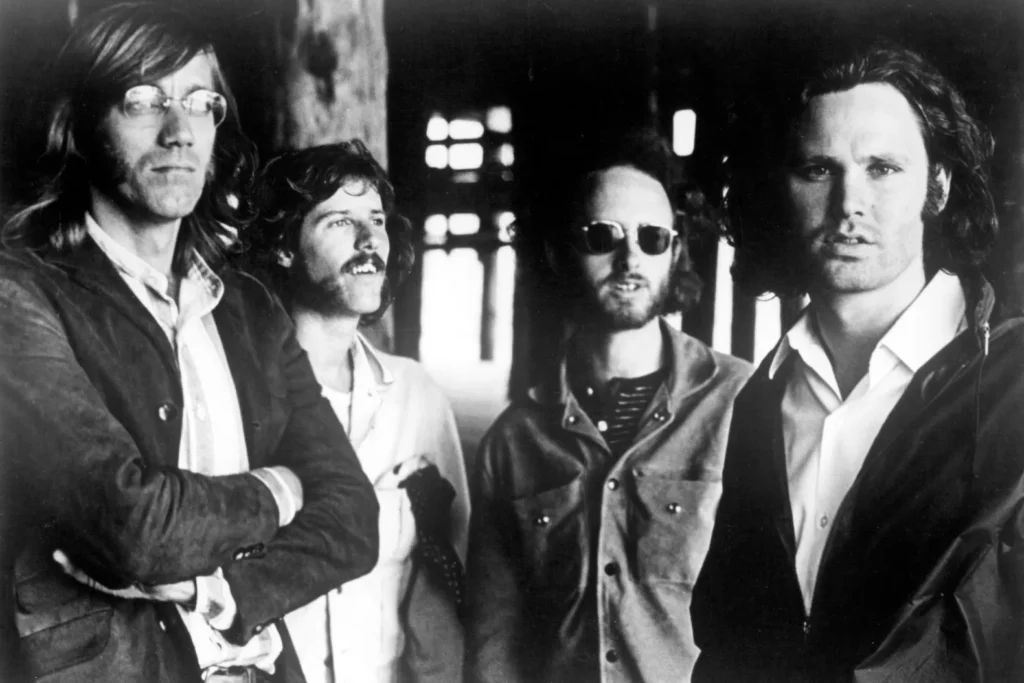
The late 1960s and early 1970s were a time of cultural upheaval and musical innovation, with The Doors standing at the forefront of the countercultural movement. Formed in 1965 in Los Angeles, the band quickly rose to prominence with their self-titled debut album in 1967, which featured the iconic track “Light My Fire.” Their music, characterized by Jim Morrison’s haunting vocals and poetic lyrics, Ray Manzarek’s distinctive keyboard work, Robby Krieger’s innovative guitar playing, and John Densmore’s dynamic drumming, captured the zeitgeist of a generation seeking new forms of expression and rebellion.
By the time they approached the recording of “LA Woman,” The Doors had released five studio albums. Their early work, including “Strange Days” (1967) and “Waiting for the Sun” (1968), had been critically acclaimed and commercially successful, solidifying their status as one of the era’s most influential bands. However, their journey was not without turbulence. The band’s fourth album, “The Soft Parade” (1969), marked a stylistic shift that received mixed reviews, and its brass-heavy sound was seen by some as a departure from their raw, edgy roots.
Internal Challenges
Internally, The Doors were grappling with mounting pressures. Jim Morrison’s erratic behavior, fueled by heavy drinking and substance abuse, often led to unpredictable live performances and legal troubles. The most notorious incident occurred in 1969 when Morrison was arrested for allegedly exposing himself during a concert in Miami, leading to a highly publicized trial that strained his relationship with the band and the public.
Despite these challenges, The Doors rebounded with their fifth album, “Morrison Hotel” (1970), which marked a return to their blues-rock origins and was well-received by fans and critics. This resurgence set the stage for “LA Woman,” with the band seeking to capitalize on their renewed momentum. The recording sessions for “LA Woman” began amidst a backdrop of both creative rejuvenation and lingering tension. Morrison’s legal battles and personal struggles added a layer of intensity to the process, making the album’s creation a complex and charged endeavor.
Inception of ‘LA Woman’

The initial idea and inspiration behind “LA Woman” emerged from The Doors’ desire to return to their roots and embrace a raw, unpolished sound that reflected their early influences and the turbulent atmosphere of Los Angeles. After the mixed reception of “The Soft Parade” and the revitalization achieved with “Morrison Hotel,” the band was determined to create an album that captured the essence of their live performances and the gritty reality of their environment.
Thematic Exploration
Thematically, “LA Woman” is steeped in the imagery and mood of Los Angeles, a city characterized by its glitz, glamour, and underlying darkness. The city served as both a muse and a mirror for the band, reflecting their experiences and the contradictions of fame and excess. Songs like the title track “LA Woman” and “Hyacinth House” delve into the themes of escape, existential angst, and the search for meaning in a rapidly changing world.
The album also draws heavily on the blues, a genre that had always influenced The Doors but became a central element of this project. The band sought to infuse their rock sound with the raw emotionality and improvisational spirit of the blues, resulting in a gritty, soulful record.
Jim Morrison’s Artistic State
Jim Morrison’s personal and artistic state during the creation of “LA Woman” was a complex mix of turmoil and inspiration. By this time, Morrison was deeply entangled in legal issues stemming from his Miami arrest, and his heavy drinking had become more pronounced. Despite these challenges, or perhaps because of them, Morrison’s creative output was intense and introspective. His lyrics for “LA Woman” reflect a man grappling with his demons, exploring themes of mortality, freedom, and the darker sides of human nature.
Artistically, Morrison was committed to pushing boundaries and experimenting with his vocal delivery. He was heavily influenced by the poetry of the Beat Generation and the existentialist philosophy, which permeated his lyrics with a sense of urgency and profound contemplation. During the recording sessions, Morrison’s performances were marked by a raw, almost primal energy, capturing the essence of his troubled yet brilliant state of mind.
Recording Process
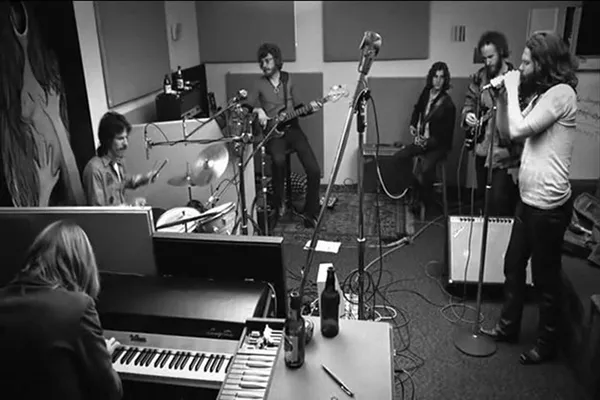
The recording process for “LA Woman” was as distinctive as the album itself, marked by a sense of urgency and raw creativity. The sessions took place in late 1970 and early 1971, primarily at The Doors’ rehearsal space on the second floor of 8512 Santa Monica Boulevard, a location that provided a relaxed and familiar environment for the band. This decision to record in their own space rather than a traditional studio was a significant shift, contributing to the album’s raw, unpolished sound.
The Atmosphere
The atmosphere during the recording sessions was one of intense focus mixed with a palpable sense of liberation. Freed from the constraints of a conventional studio setting, the band could experiment more freely and capture the spontaneous energy that defined their live performances. This informal setup helped to alleviate some of the tensions that had plagued previous recording efforts, fostering a more collaborative and cohesive environment.
Bruce Botnick, who had previously worked with The Doors as an engineer, stepped in as producer for “LA Woman” after their longtime producer Paul A. Rothchild departed, deeming the new material as “cocktail music.” Botnick’s approach was more hands-off and supportive, allowing the band to take the lead in shaping the album’s sound. His familiarity with the band’s dynamics and technical prowess was instrumental in achieving the desired rawness and immediacy. Botnick emphasized capturing the band’s live energy, which was crucial in creating the authentic, blues-infused rock sound that defines “LA Woman.”
The technical aspects of the recording were also unique. The band used a simple, straightforward setup, relying on tried-and-true analog equipment. They recorded on a 16-track tape machine, which offered ample flexibility for overdubs while maintaining the warmth and depth of analog sound. The use of vintage microphones and minimal effects helped to preserve the organic quality of the performances. One of the most notable technical innovations was the use of a bathroom as an echo chamber for Jim Morrison’s vocals on tracks like “Riders on the Storm,” adding a haunting, atmospheric quality to the recordings.
The Recording Sessions
During the sessions, the dynamics between band members were generally positive, with a renewed sense of purpose driving their collaboration. Morrison, despite his ongoing personal struggles, was deeply engaged and committed to the project. His vocal performances were impassioned and raw, reflecting both his inner turmoil and artistic vision. Ray Manzarek, Robby Krieger, and John Densmore were equally dedicated, each bringing their unique musical strengths to the table. Manzarek’s keyboard work was as innovative as ever, Krieger’s guitar playing was both fluid and powerful, and Densmore’s drumming provided a solid, dynamic foundation.
The sessions also saw the involvement of bassist Jerry Scheff and rhythm guitarist Marc Benno, whose contributions added depth and richness to the album’s sound. Scheff’s bass lines were particularly influential in shaping the album’s bluesy feel, while Benno’s rhythm guitar provided additional texture.
Key Tracks and Their Stories
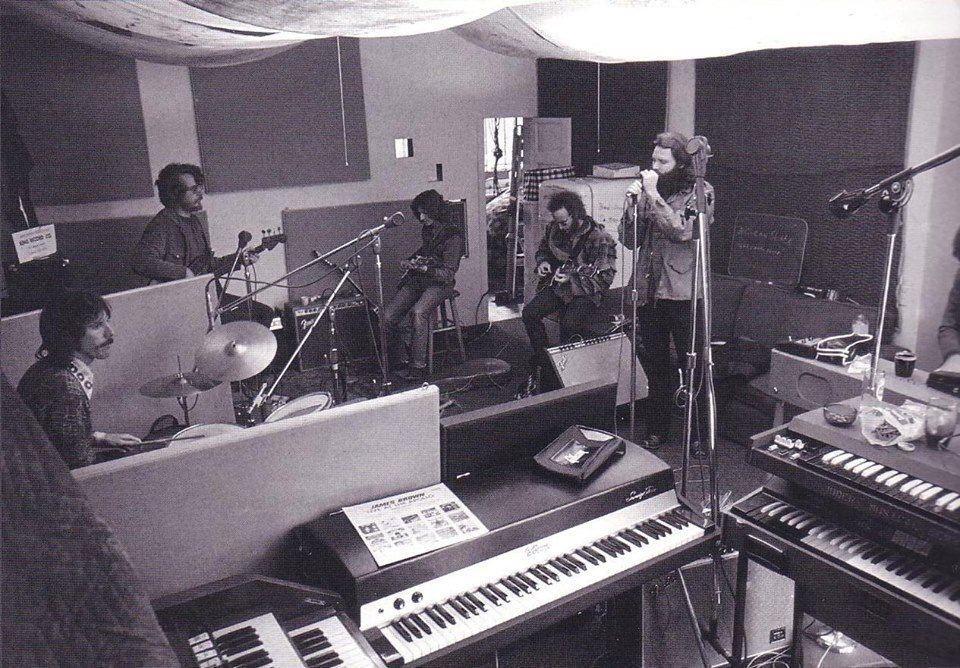
“LA Woman”
The title track of the album, “LA Woman,” is a sprawling, blues-infused ode to the city of Los Angeles. Clocking in at nearly eight minutes, the song captures the essence of the city’s vibrant yet gritty atmosphere. The creation of “LA Woman” was a collaborative effort, with Jim Morrison penning the evocative lyrics that paint a picture of the city as both a muse and a maze. The song’s refrain, “Mr. Mojo Risin’,” is an anagram of Morrison’s name, adding a personal touch to the track.
Musically, “LA Woman” stands out for its driving rhythm and dynamic structure. Ray Manzarek’s electric piano and Robby Krieger’s guitar work interweave seamlessly, creating a sense of motion and urgency that mirrors the bustling streets of Los Angeles. The track’s significance lies in its raw energy and lyrical depth, encapsulating the spirit of the album and the city that inspired it. It’s a testament to The Doors’ ability to blend rock, blues, and poetry into a compelling narrative.
“Riders on the Storm”
“Riders on the Storm” is perhaps the most haunting and atmospheric track on “LA Woman.” The song originated from an old cowboy song, “(Ghost) Riders in the Sky,” and evolved into a dark, jazzy composition that reflects Morrison’s fascination with the mysterious and the macabre. The track is notable for its distinctive sound effects, including the sound of thunder and rain, which were added during the recording process to enhance the song’s eerie mood.
The recording of “Riders on the Storm” featured a unique approach to vocals. Morrison recorded his vocals in a bathroom, using the natural reverb to create a ghostly effect. This technique, combined with Manzarek’s ethereal electric piano lines and Krieger’s fluid guitar work, gives the song its distinctive, otherworldly feel. “Riders on the Storm” was the last song Morrison recorded with the band, adding a poignant layer to its legacy. Its introspective lyrics and innovative production have made it one of The Doors’ most enduring and influential tracks.
“Love Her Madly”
“Love Her Madly” was one of the first singles released from “LA Woman” and became an immediate hit. Written by Robby Krieger, the song is a catchy, upbeat track that contrasts with the darker themes of the album. The lyrics, inspired by Krieger’s tumultuous relationship with his girlfriend, explore themes of love and frustration. The track’s infectious melody and pop sensibility helped it gain significant radio play and commercial success.
The recording of “Love Her Madly” was straightforward compared to some of the other tracks on the album. The band’s tight, cohesive performance is evident, with Densmore’s crisp drumming and Manzarek’s vibrant keyboard work driving the song forward. “Love Her Madly” was well-received by both fans and critics, cementing its place as one of The Doors’ classic hits.
Other Notable Tracks
“The Changeling” The album opens with “The Changeling,” a funky, soulful track that showcases Morrison’s vocal prowess and the band’s rhythmic versatility. The song’s lyrics reflect Morrison’s restless spirit and desire for change, setting the tone for the album.
“Been Down So Long” Inspired by the blues legends Morrison admired, “Been Down So Long” is a gritty, blues-rock number that highlights the band’s musical roots. The raw energy and powerful vocals make it a standout track.
“Hyacinth House” “Hyacinth House” features introspective lyrics and a haunting melody, reflecting Morrison’s sense of isolation and his longing for peace. The song’s delicate instrumentation and melancholic tone provide a contrast to the more robust tracks on the album.
“Cars Hiss by My Window” This track is a slow, bluesy number with a hypnotic groove. The minimalist arrangement and Morrison’s moody vocals create an intimate, reflective atmosphere.
“The WASP (Texas Radio and the Big Beat)” With its spoken-word verses and driving beat, “The WASP” is a nod to the band’s early experimental style. The song’s vivid imagery and rhythmic intensity make it a memorable addition to the album.
Challenges and Triumphs
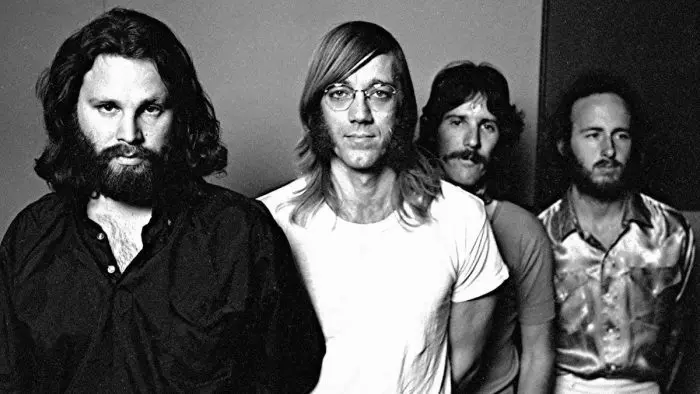
The recording process of “LA Woman” was fraught with numerous challenges, yet it stands as a testament to The Doors’ resilience and creativity. Personal conflicts, technical issues, and the general atmosphere of uncertainty shaped the album’s creation, but the band’s determination and unity ultimately led to its triumphant completion.
One of the most significant difficulties was Jim Morrison’s deteriorating health and increasing unreliability. His heavy drinking and erratic behavior were at their peak, causing strain among band members. Sessions were often unpredictable, with Morrison’s mood swings and physical condition affecting his performance. Despite these issues, his vocal contributions were deeply impassioned, capturing the raw intensity that defines the album.
Technical Challenges
Technical challenges also emerged, particularly with the informal recording setup at their rehearsal space on Santa Monica Boulevard. The lack of professional studio amenities meant the band had to be resourceful. They relied on a 16-track tape machine, vintage microphones, and minimal effects to achieve their desired sound. This stripped-down approach, while challenging, contributed to the album’s raw and authentic feel.
Bruce Botnick, stepping in as producer, played a crucial role in navigating these challenges. His relaxed, supportive approach allowed the band to take creative control, fostering a more collaborative and productive environment. Botnick’s technical expertise and innovative solutions, such as using a bathroom for vocal reverb, helped overcome some of the recording limitations and enhanced the album’s distinctive sound.
Interpersonal dynamics within the band also presented hurdles. The departure of longtime producer Paul A. Rothchild, who dismissed the new material as “cocktail music,” could have destabilized the project. However, the band used this as an opportunity to reclaim their sound and direction. The sessions became a time of reconnection and reinvigoration, with each member contributing fully to the creative process.
Despite these difficulties, the band managed to complete “LA Woman” through a combination of perseverance, adaptability, and mutual support. The informal setting allowed for a more relaxed atmosphere, which helped ease some of the tensions and foster a spirit of experimentation. The addition of bassist Jerry Scheff and rhythm guitarist Marc Benno also brought fresh energy and depth to the recordings.
A Triumph
Anecdotes from the sessions highlight the sense of accomplishment the band felt. One memorable moment involved the recording of “Riders on the Storm.” Morrison’s idea to add the sound of rain and thunder created a haunting atmosphere, perfectly complementing the song’s mood. Another instance was the spontaneous and energetic recording of the title track, “LA Woman,” which captured the band’s synergy and improvisational prowess.
The completion of “LA Woman” was not just a technical achievement but an emotional and artistic triumph. The band had successfully navigated personal and professional challenges to produce an album that was true to their vision. This sense of accomplishment was palpable during the final playback sessions, where the band and Botnick celebrated their hard work and the album’s cohesive, powerful sound.
Morrison’s Last Stand
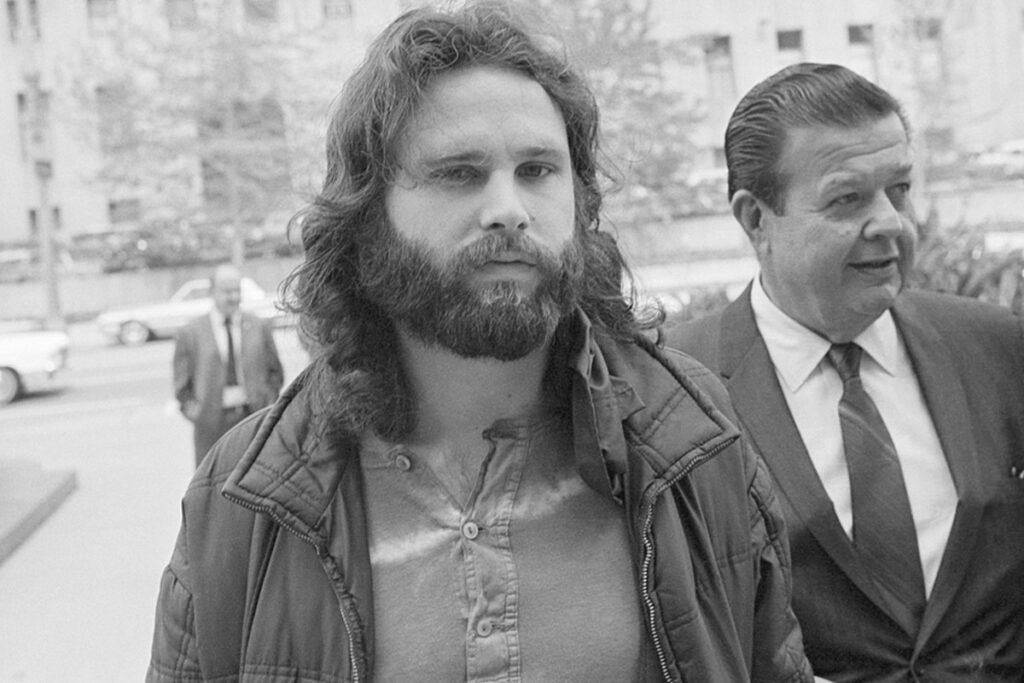
Jim Morrison’s contribution to “LA Woman” is perhaps the most poignant and compelling aspect of the album. As his final work with The Doors, Morrison’s performance and creative input were marked by a sense of urgency and depth, capturing both the zenith of his artistic expression and the turmoil of his personal life.
Morrison’s vocal performances on “LA Woman” are among the most intense and passionate of his career. Despite his declining health and escalating substance abuse, he delivered powerful, raw, and emotive vocals that conveyed a profound connection to the material. On the title track “LA Woman,” Morrison’s gritty delivery and the iconic refrain “Mr. Mojo Risin'” — an anagram of his name — reflect both his larger-than-life persona and his deep-seated introspection. His performance on “Riders on the Storm” is haunting and melancholic, imbued with a ghostly resonance that became a defining element of the song. This track, recorded with Morrison in the bathroom to achieve the desired reverb effect, showcases his willingness to experiment and push boundaries until the very end.
Morrison’s Impact
Reflecting on Morrison’s legacy and his impact on “LA Woman,” it becomes clear that his presence was the driving force behind the album’s enduring mystique. Morrison’s poetic sensibilities and his fascination with the darker aspects of human nature permeate the album, infusing it with a sense of existential dread and longing. His ability to weave complex, evocative narratives through his lyrics left an indelible mark on the album, elevating it from a mere collection of songs to a cohesive, immersive experience. Tracks like “Hyacinth House” and “The Changeling” delve into themes of isolation, transformation, and the search for meaning, reflecting Morrison’s own struggles and existential musings.
During the recording period, Morrison’s life and mindset were characterized by a blend of creative fervor and personal chaos. The pressures of fame, legal battles, and his own self-destructive tendencies weighed heavily on him. Yet, amidst this turmoil, Morrison remained fiercely dedicated to his art. His lyrics on “LA Woman” reveal a man acutely aware of his mortality, grappling with his inner demons while seeking solace in his music. Anecdotes from the recording sessions suggest that despite his erratic behavior, Morrison was deeply engaged and committed to the project. His bandmates recall moments of intense focus and inspiration, where Morrison’s genius shone through the haze of his personal struggles.
One poignant insight into Morrison’s state of mind comes from his decision to leave for Paris shortly after the album’s completion. This move, driven by a desire to escape the pressures of his life in the United States and find a new sense of peace, ultimately marked the end of his journey. “LA Woman” thus stands as a final artistic statement, a culmination of Morrison’s profound lyrical talent and the raw, unfiltered energy that defined his contributions to The Doors.
Release and Reception
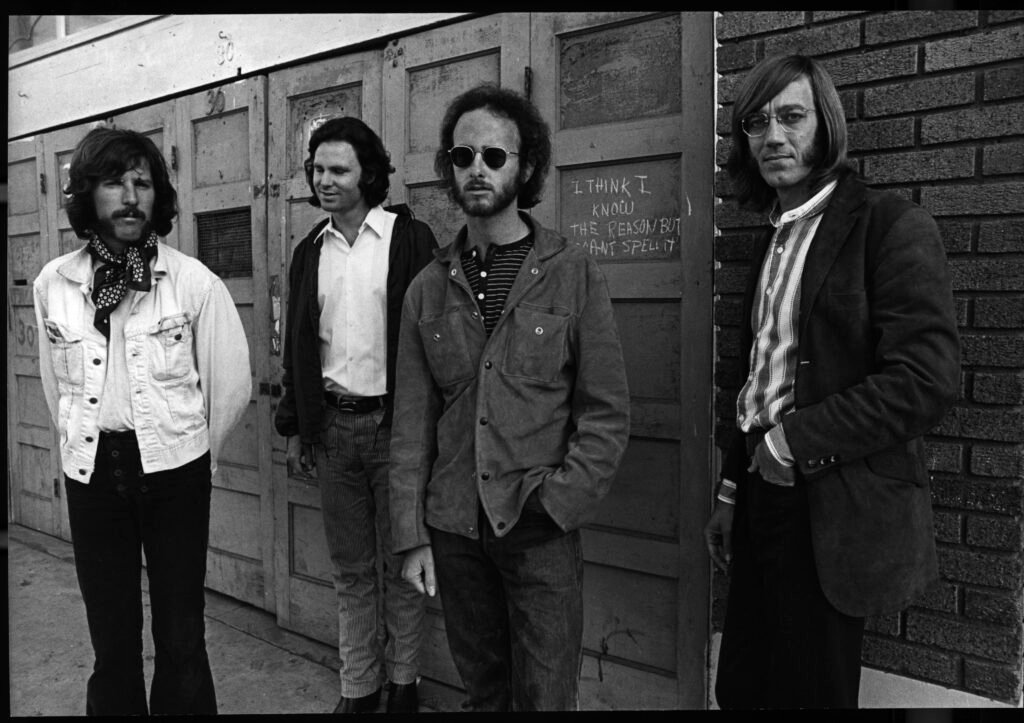
The album’s release date and initial critical and commercial reception
“LA Woman” was released on April 19, 1971, amid a backdrop of both anticipation and uncertainty. The album’s release marked the culmination of The Doors’ turbulent journey with Jim Morrison, who had recently completed the recording sessions despite his increasing personal struggles. Upon its release, “LA Woman” was met with a mixture of acclaim and curiosity, reflecting the complex legacy of the band and Morrison’s final contribution.
Critically, the album was well-received, with many reviewers praising its raw, blues-infused sound and Morrison’s evocative lyrics. Publications like Rolling Stone highlighted the album’s stark, unfiltered quality, noting how it captured the essence of The Doors’ live energy more effectively than any of their previous works. Critics appreciated the album’s cohesive blend of rock, blues, and jazz elements, with tracks like “Riders on the Storm” and “LA Woman” being singled out for their haunting atmosphere and lyrical depth.
Commercially, “LA Woman” achieved significant success, debuting at number 9 on the Billboard 200 chart. Its lead single, “Love Her Madly,” enjoyed considerable radio play and peaked at number 11 on the Billboard Hot 100, further boosting the album’s profile. Despite the critical acclaim and commercial success, there was an undercurrent of melancholy, as fans and critics alike were acutely aware that this was Jim Morrison’s final studio album with The Doors.
How the album was received by fans and the media at the time
At the time of its release, “LA Woman” resonated strongly with fans, who embraced its raw sound and introspective lyrics. The album’s gritty production and Morrison’s intense vocal performances struck a chord with listeners, who appreciated the band’s return to their bluesy roots. Many fans celebrated the album as a triumphant final statement from Morrison and The Doors, capturing the spirit of a band that had always thrived on pushing boundaries.
Media coverage of the album was generally positive, though it often carried an undercurrent of nostalgia and poignancy. Reviews highlighted the album’s emotional depth and Morrison’s lyrical brilliance, with some critics noting the album’s bluesy feel as a fitting tribute to the band’s musical influences. The sense of finality surrounding the release added a layer of poignancy, as many recognized that “LA Woman” represented the end of an era for The Doors.
Long-term impact and legacy of ‘LA Woman’ in rock history
Over the years, “LA Woman” has grown in stature, cementing its place as one of rock’s most iconic albums. Its legacy is characterized by its raw sound, lyrical depth, and the enduring mystique of Jim Morrison’s final work with the band. The album’s impact is evident in its continued influence on musicians across various genres, with artists citing “LA Woman” as a major inspiration for their own work.
Tracks like “Riders on the Storm” have become classics, celebrated for their innovative production and haunting atmosphere. The album’s blend of rock, blues, and jazz elements has influenced countless artists, from those in the realms of rock and roll to those in indie and alternative music. Its themes of existential angst, freedom, and the search for meaning continue to resonate with new generations of listeners, ensuring that “LA Woman” remains a timeless piece of musical art.
In addition to its musical impact, “LA Woman” also stands as a significant cultural artifact, reflecting the turbulent spirit of its time and the enduring legacy of The Doors. The album’s cover art, featuring a photograph of Morrison’s cryptic hand, has become an iconic image in rock history, symbolizing the enigmatic allure of the band and its frontman.
In summary, “LA Woman” was a critical and commercial success upon its release, and its legacy has only grown stronger over the decades. It remains a powerful testament to Jim Morrison’s artistic vision and The Doors’ innovative spirit, continuing to inspire and captivate audiences around the world. The album’s place in rock history is secure, a lasting tribute to the enduring power of The Doors’ music and the unique genius of Jim Morrison.
